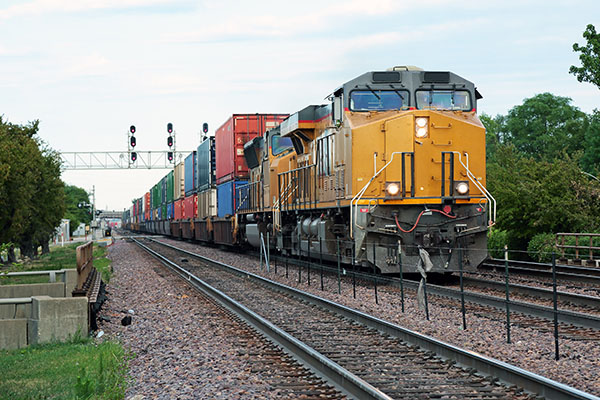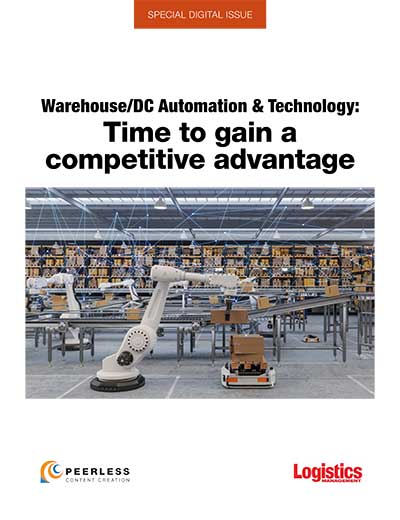AAR report highlights potential economic impact of a railroad service interruption
As the clock ticks down towards the September 16, 12:01 A.M. deadline for United States-based freight railroads and railroad labor unions to reach labor accord, a new report issued this week by the Association of American Railroads (AAR) makes the case for what is at stake should deals not be struck with the remaining unions that have yet to reach new labor deals.
In recent weeks, five railroad labor unions have reached new deals, including: the International Brotherhood of Electrical Workers and the American Train Dispatchers Union—whom collectively represents around 6,000 freight rail employees. This followed tentative agreements struck with three other unions in late August: Transportation Communications Union/IAM; Brotherhood of Railway Carmen; and International Association of Machinists and Aerospace Workers—whom collectively represent more than 15,000 rail employees. There are seven other unions whom have yet to reach respective agreements.
As previously reported by LM, these agreements followed the announcement of the recent appointment of the Presidential Emergency Board (PEB) appointed by President Biden, which is focused on resolving a labor dispute between Class I rail carriers and 12 U.S.-based rail labor unions on reaching labor accord.
What’s more, these five tentative agreements are the first ones since the August 16 release of the PEB’s recommendations, which include a 24% wage increase over the five-year period from 2020 through 2024, coupled with a 14.1% wage increase that is effective immediately, as well as five annual $1,000 lump sum payments, with a portion of the lump sum payments are retroactive and will be paid out promptly upon ratification of the agreements by the unions’ membership, according to the National Carriers Conference Committee.
The AAR’s report puts a firm onus on the need for all 12 rail labor unions to reach deals by the September 16 deadline, explaining that a nationwide rail service interruption “would dramatically impact economic output and could cost more than $2 billion per day of a shutdown.”
What’s more, it added that should deals not be reached by the deadline, Congress will need to step in and act to prevent a service interruption that will harm and impact every rail-served economic sector. Examples of this highlighted in the report include: idling more than 7,000 trains per day; triggering retail product shortages and widespread manufacturing shutdowns; job losses; and disruptions to hundreds of thousands of passenger rail customers.
“As the freight sector heads into peak shipping season, a nationwide rail work stoppage would result in an unnecessary $2 billion daily economic hit,” said AAR President and CEO Ian Jefferies in a statement. “President Biden’s PEB recommended terms that would maintain the highest quality health care coverage and result in compounded wage increases of 24%, bonuses totaling $5,000 — the highest pay increases in nearly 50 years. Like those unions that have already tentatively agreed to the PEB deal, each of the remaining unions can still enter into agreements based on these recommendations. However, should negotiations fail and result in a work stoppage, Congress must act to implement the PEB recommendations—rewarding employees and stopping unnecessary economic harm and uncertainty for rail customers.”
For historical context, the AAR report cited a 1992 econometric model used by the Federal Railroad Administration, in order to estimate the impact of a national rail shutdown on both employment and economic output. The model found that a two-week shutdown would result in 570,000 rail-served industry layoffs and $14 billion in lost output—or $1 billion per day.
And it added that daily tally would be much higher now, due to inflation, the constant-dollar GDP chain-weighted deflator, which measures economy-wide price changes; and how much supply chains have been streamlined since 1992, with limited excess capacity to move goods and freight.
Looking at the impact of a potential rail shutdown on other modes, the report explained that most shippers that use rail could modify their distribution patterns. But that comes with the caveat, it noted, that making a switch on short notice to trucks or barges, or changing production processes to reduce or eliminate the need for rail service, would be very expensive and disruptive, as well as impractical.
Putting data behind that, the report observed that in 2021, Class I railroads generated 1.534 trillion ton-miles of traffic, an average of 4.20 billion ton-miles per day. And it added that a typical long-haul truck carries around 18 tons of freight and moves that freight 500 miles per day, whereas a truck generates around 9,000 ton-miles per day. That would, in turn, create the need for around an additional 476,000 long-haul trucks per day to move all railroad freight—on top of the 2.8 million truck tractors operating today, based on Federal Highway Administration data, with only a portion focused on long-haul service.
That is not promising, as the report explained it would take years to grow the long-haul fleet to that extent, coupled with the current truck driver shortage, which the American Trucking Associations pegs at around 80,000.
“The bottom line is that, in the event of a railroad shutdown, trucks could not take more than a small fraction of what would otherwise move by rail in the short term,” said AAR.
To read the complete AAR report, please click here.













